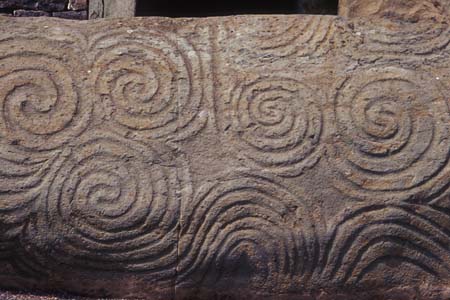

My current obsession — at least knitting-wise — has to do with fabrics and textiles whose stitch patterns seem to suggest water (spirals and waves) and those that resemble scales (as in mermaids and other water creatures).
I’m in the early stages of researching this kind of stitch patterning in the history of knitting – and while my initial instinct was to assume Celtic and Nordic traditions, Japanese and Chinese influences are quickly (and clearly) showing their relevance.
My interest and inspiration derives from an odd confluence of things: The current exhibit at Turtle Bay Exploration Park, “Mythic Creatures” from the American Museum of Natural History (which includes Mermaids, and other sea creatures); the animated Irish film, “Song of the Sea” (which tells a story of Celtic Selkies or seal-people, and which includes beautiful examples of Celtic spirals); and a knitting tradition in my brother-in-laws family, which includes a stitch pattern resembling waves. So far, my knitting has only ventured into the depiction of waves/scales (by spirals may be next).


It’s a fascination that I may not be able to fully satisfy, though seeking out different variations of wave patterns (over time ) and in different ountries has proven interesting and eye-opening. Asian countries such as China and Japan also rely on water for their livelihood, and even more clear representations come in the form of modern shadow-puppets (in China), historic Kimono designs in Japan (notably the Seigaiha Symbol).
Do you have an example to share that I’ve not considered? Please share in the comments below!

